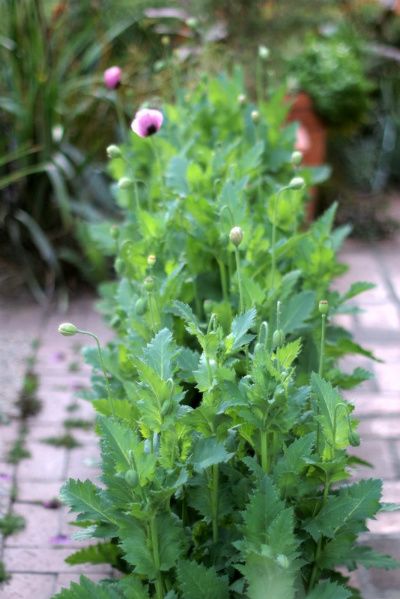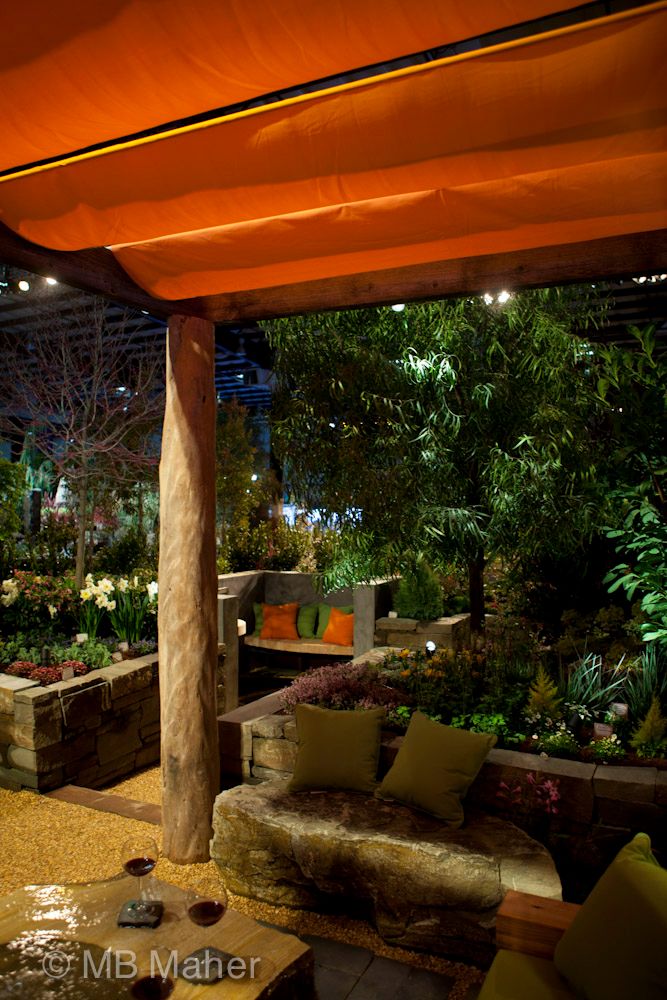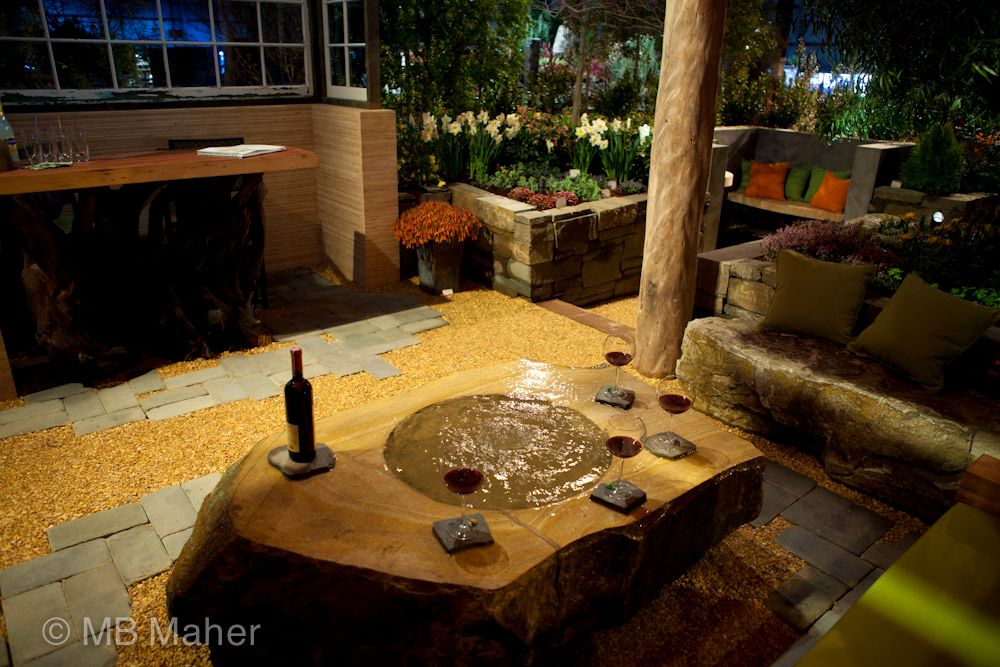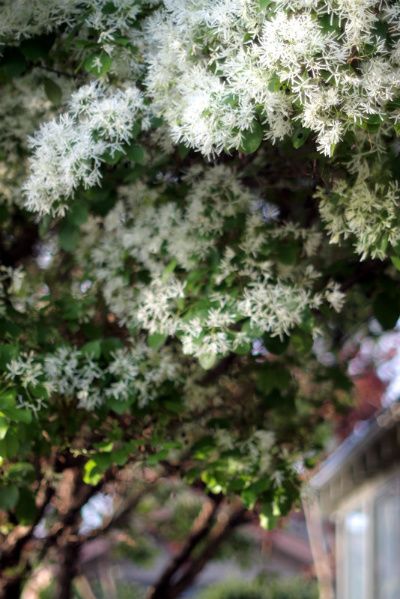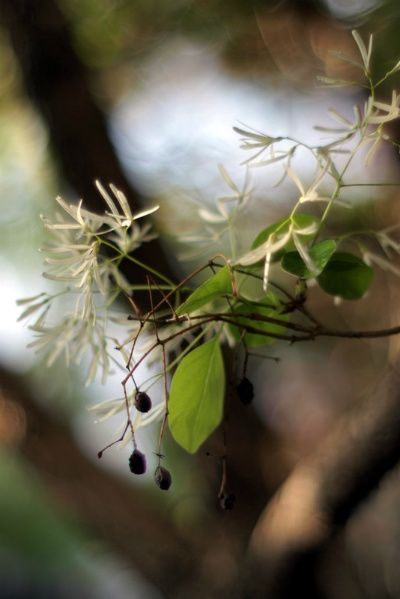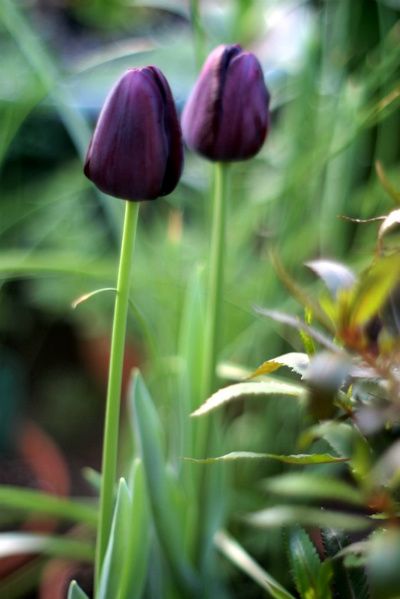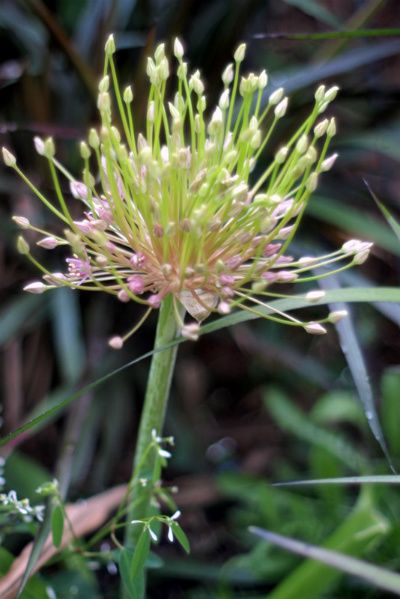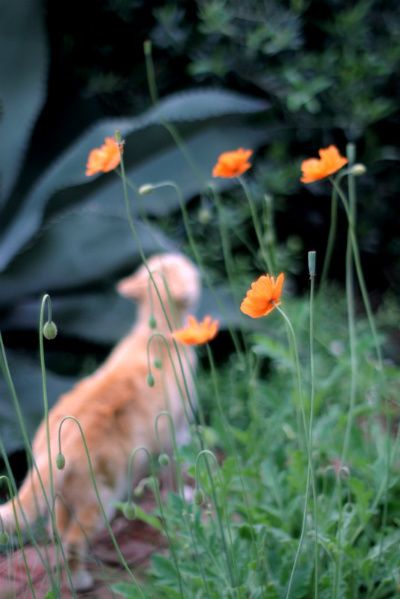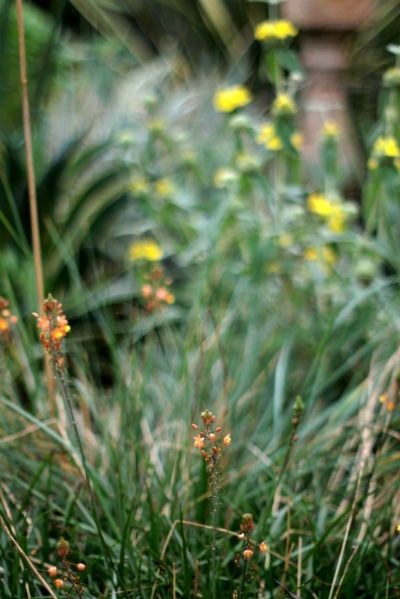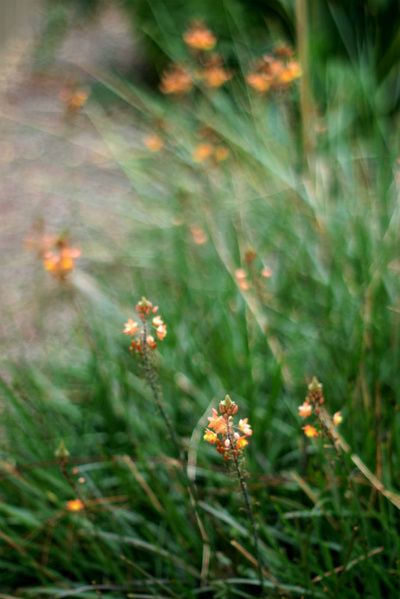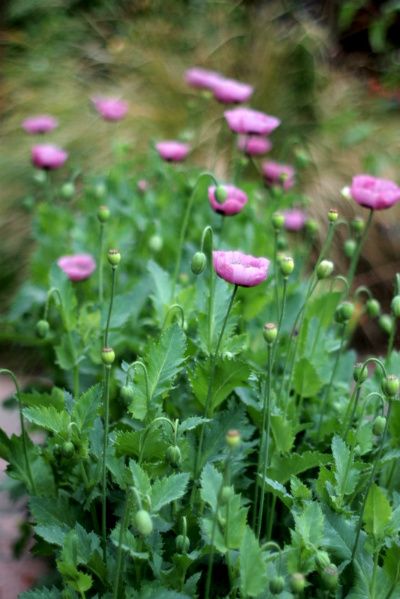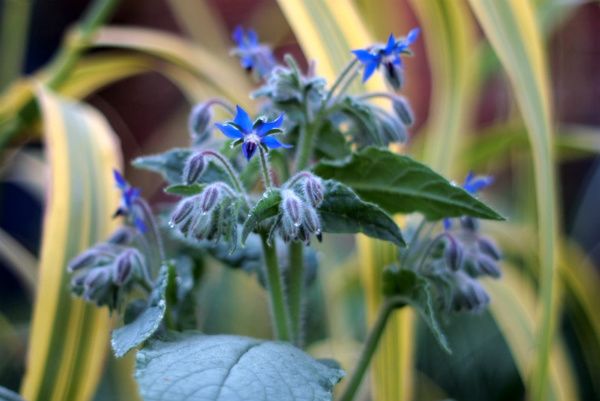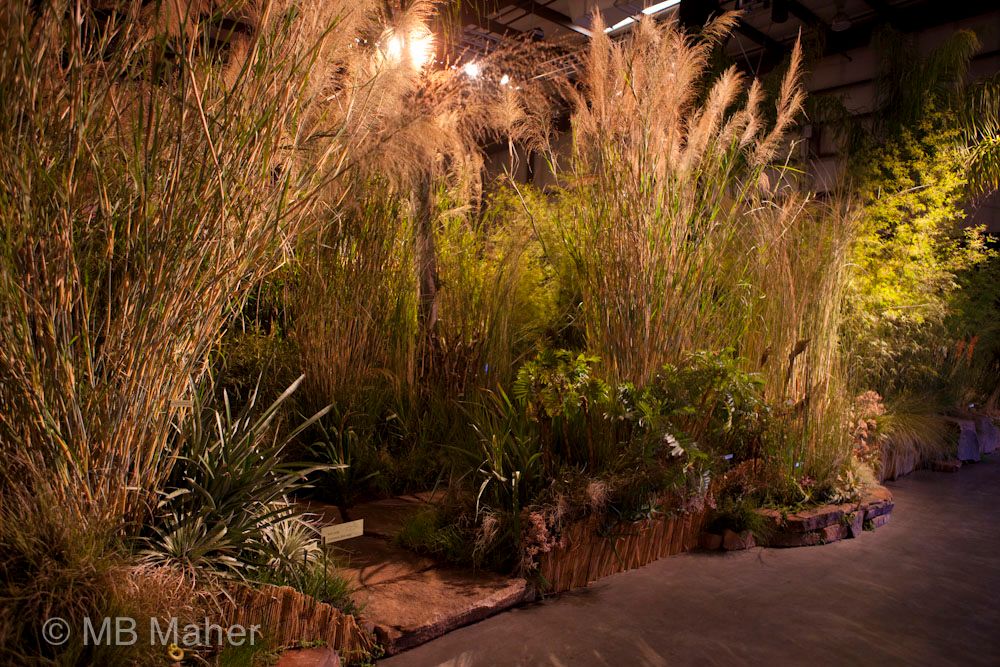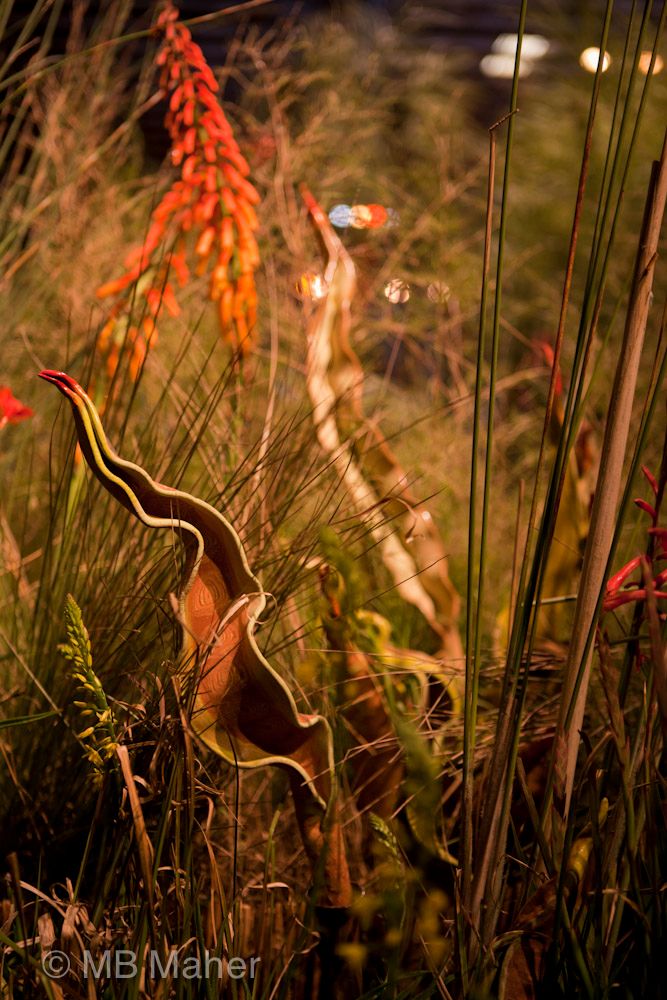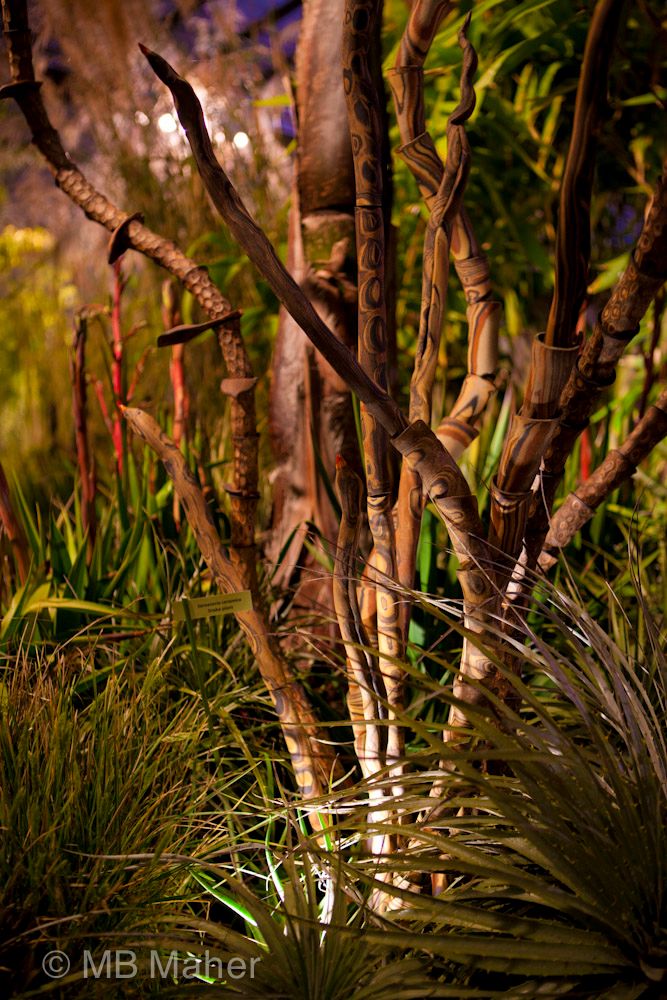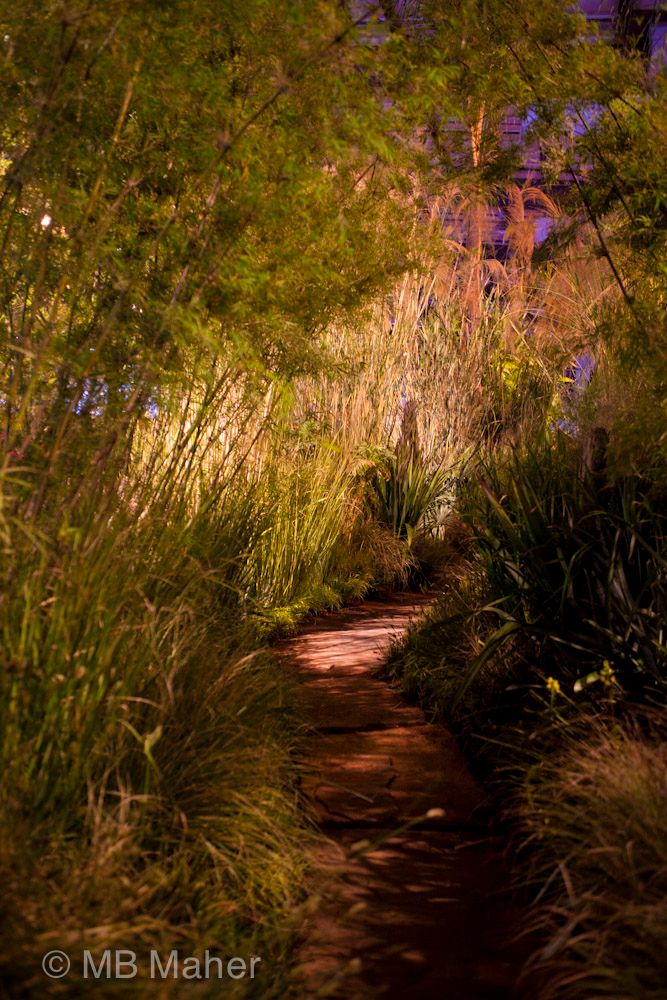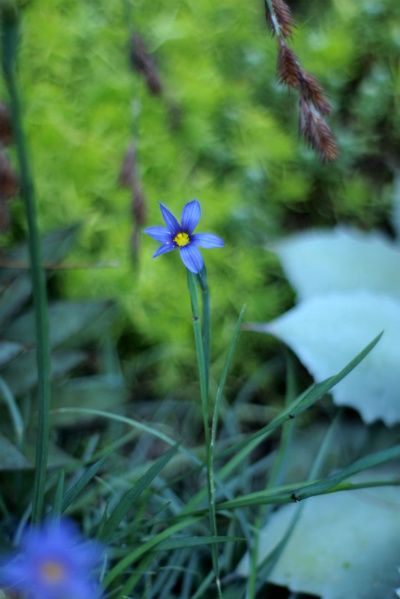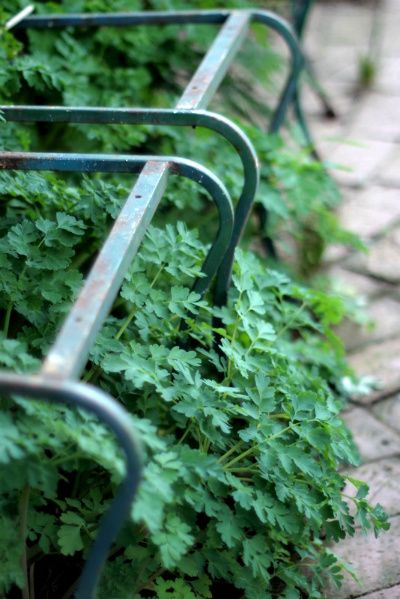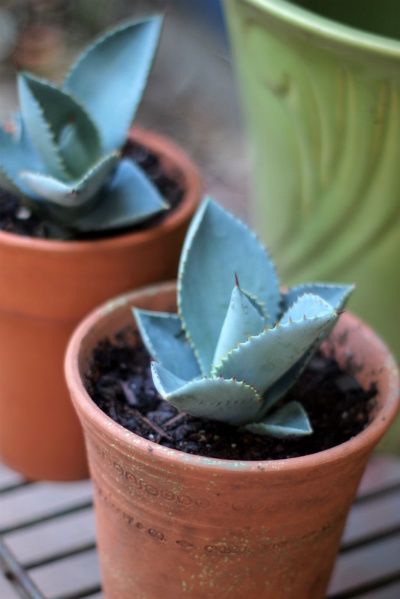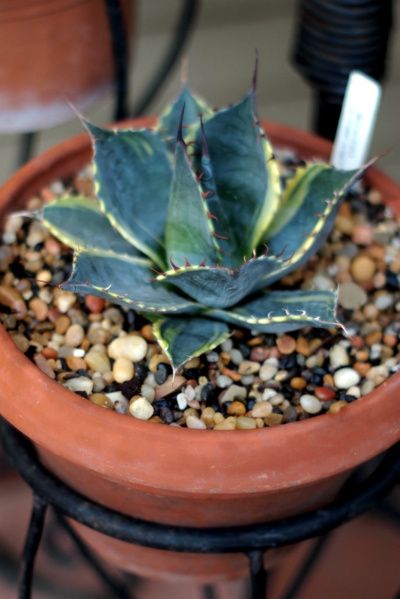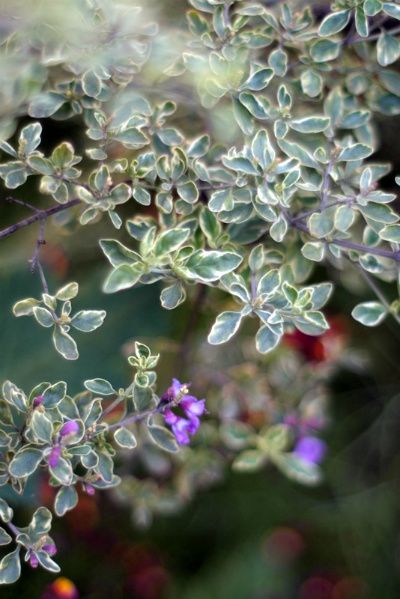A dead car battery after work has me skidding and sliding to make the Bloom Day deadline. Some of the new plants I ordered for spring became candidates for March Bloom Day literally right out of the box. Like this Tibouchina granulosa ‘Gibraltar’ from Plant Delights. This photo was taken the day after it arrived and was unpacked.
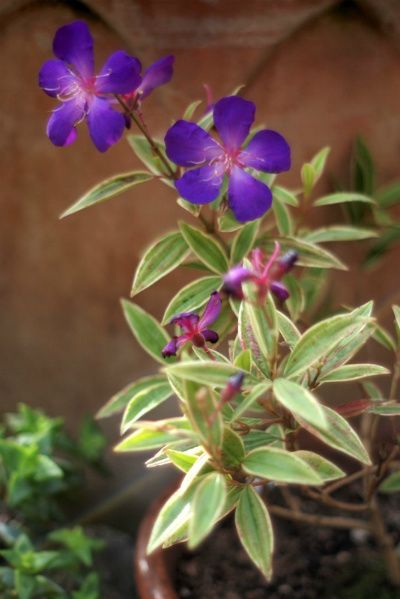
Every spring this wisteria surges over the fence from a neighbor’s property, an invader in the southeast corner of the back garden quietly determined to throttle my smoke tree in its tendrils. Something borrowed and blue (okay, bluish-lilac) to admire when in bloom, but I’m always grateful that it’s somebody else’s problem the rest of the year. The more I hack it back off our fence, the better it blooms.
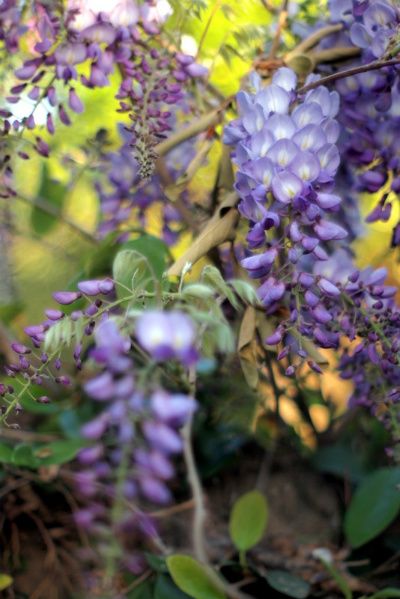
Just brought this one home last weekend, a Proven Winner’s selection, Didelta carnosa ‘Dawn.’ The radioactive chrome yellow daisies must be endured for a brief time, when things will hopefully quiet down to just some fine-looking succulent, silvery leaves and chartreuse bracts. Bought on a whim but looks promising.
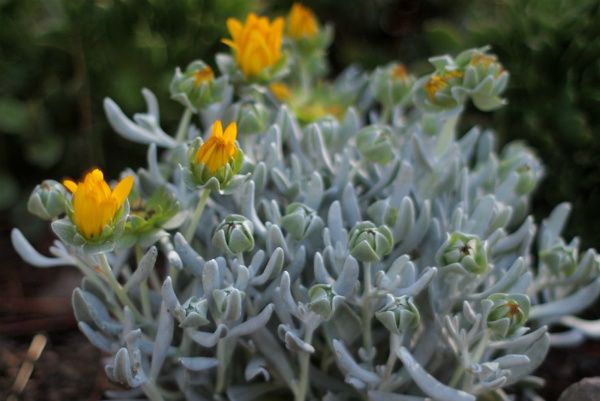
Begonia luxurians has been blooming the past few months, though I never think to grab a photo for Bloom Day.
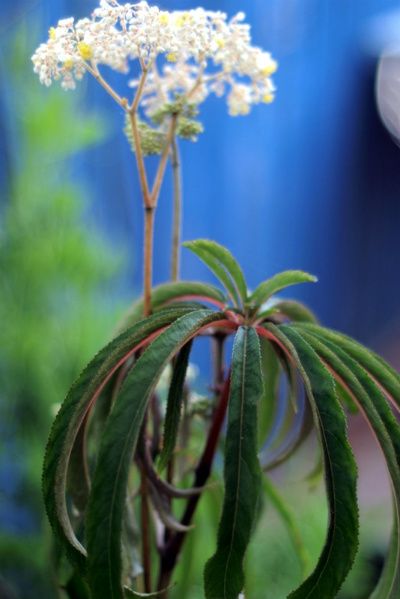
Always a few mystery plants in bloom, like this unnamed, green-flowered begonia just in time for St. Patrick’s Day.
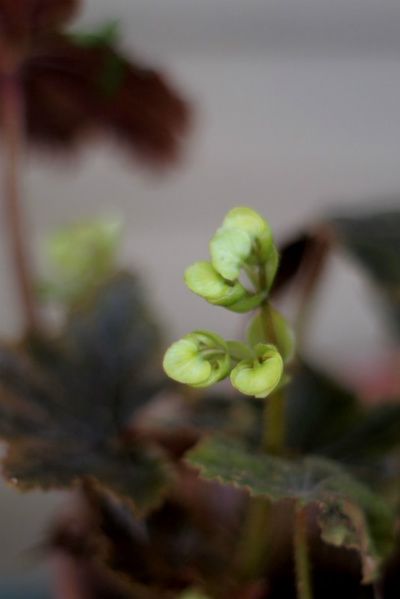
Mystery senecio

Scrophularia calliantha from Annie’s Annuals & Perennials planted in fall started blooming late February. A big, boragey, salvia-esque plant with exacting water needs even in a large container.
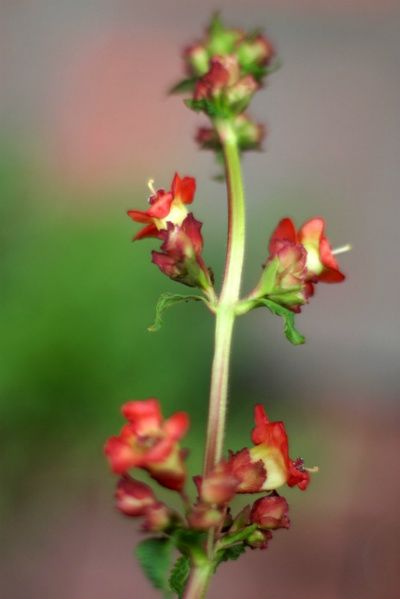
The annual toadflax, Linaria reticulata, a good choice for a zone 10 winter, seen here with the spears of Senecio anteuphorbium.
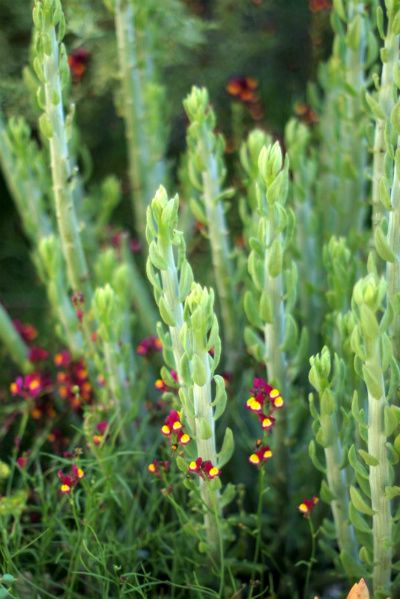
Angelica pachycarpa.
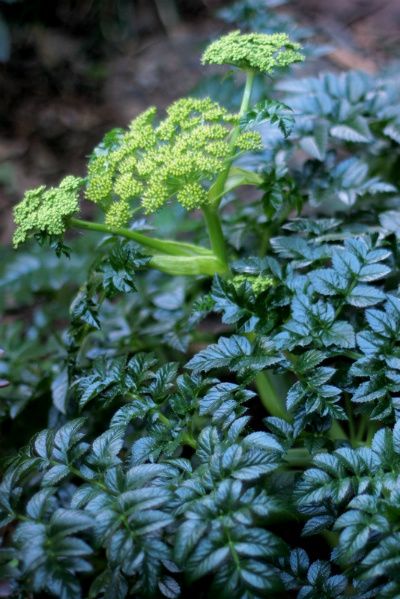
Lots of salvias in bloom now, including ‘Wendy’s Wish.’
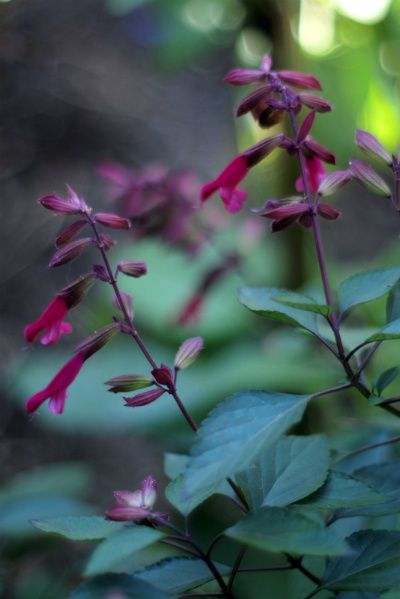
The ‘Drakensberg Carmine’ gerberas have been prodigious bloomers over the winter.

March will probably see the last of the coronilla blooms.
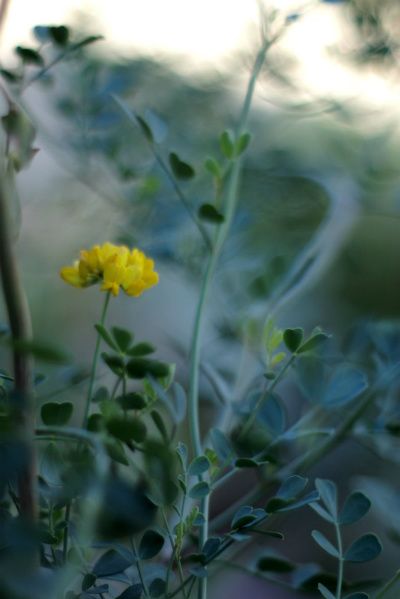
Thanks as always to Carol at May Dreams Gardens for hosting Bloom Day on the 15th of every month.
